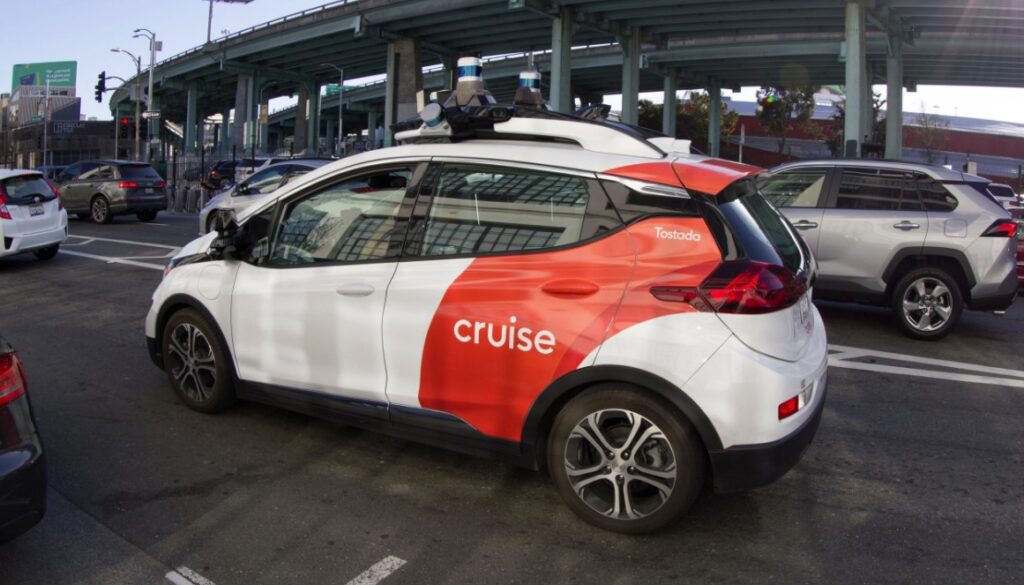Jobs
Gutting Jobs to Promote Automation — A Losing Blueprint – Transport Workers Union

This is the monthly edition of the Transport Workers Union’s Transportation Technology Newsletter. We aim to inform and educate our members, the labor movement, the public and policymakers about developments in transportation technology – and what the TWU is doing to ensure that new technology doesn’t undermine safety or harm the livelihoods of hard-working blue-collar workers. For suggestions and questions, please email ewytkind@gmail.com or adaugherty@twu.org.
ITEM OF THE MONTH
TOTAL MALARKEY: A recent House Transportation Committee hearing underscored the bipartisan support for federal transit worker protections in the face of commentary arguing that federal law known as Section 13c hinders transit agencies from implementing automation and reducing expenses.
Bipartisan defense: Republican Reps. Marc Molinaro and Anthony D’Esposito of New York defended the existing protections – and argued that the rules enabled more productive contract negotiations with TWU members in their districts. D’Esposito said a successful negotiation in his district “would not have been possible without the federal transit worker protections also known as 13c protections.”
And Molinaro said that arguments in favor of gutting 13c from Reason Foundation senior policy analyst Marc Scribner at a recent House hearing were “offensive” because they ultimately rest on cutting jobs as a route to implementing more automation.
“I do think that this rush to undermine the collective bargaining agreements and the protections afforded to public or municipal employees is always the excuse we use in order to achieve savings,” Molinaro said. “I think that’s the kind of thing that gets addressed by people who don’t actually negotiate the contracts or don’t want to take the political risk of negotiating healthy contracts. I find it offensive because ultimately there are individuals who are going to work everyday trying to do their jobs well and they want the protection of the federal government, they want the protection of local governments.”
TWU International President John Samuelsen said gutting 13c is the “wrong approach for ensuring better service and isn’t an impediment for new technology.” Rep. Chuy Garcia (D-Ill.) also spoke out against attempts to gut worker protections at the T&I hearing.
“This is just another attempt to undermine workers and increase the power of the bosses,” Samuelsen said. “I commend both parties for speaking out on a veiled attempt to replace blue collar transit workers with unproven automation.”
Check out more from the hearing here and here.
WHAT ELSE IS COOKING
I LEFT MY COPTER IN SAN FRANCISCO: Federal Aviation Administration-approved air taxi operators, Archer and Joby, are descending on the Bay Area with plans to launch services in 2025. Both companies still await FAA certification of the aircraft they will fly. Their plans include strategies to develop the infrastructure needed – either through use of newly built “vertiports” or utilization of existing air facilities. Archer claims it can reduce “60-90 minute” automobile commutes to “10-20 minute” air taxi flights.
“There remain far too many unanswered questions for aviation regulators to answer first before they unleash this unproven technology,” said TWU International President John Samuelsen. “Some of the air taxi developers are pushing the insanity of a pilotless business model and regulators must stop dangerous experimentation that would use humans as crash dummies as we’ve seen with menacing robotaxis.”
Last year, The TWU told federal safety regulators to give “rigorous scrutiny” to these emerging advanced air mobility (AAM) technologies: “All AAM technology must be measured against the safety standards we have in place today. Even under the laboratory-like conditions AAM companies are testing these aircraft in today, this equipment is crashing at a much higher rate than traditional aircraft … the DOT should never set standards based on hopes and anticipations. It must regulate the industry based on its true, current capabilities.”
WHAT THE TRUCK? Tesla was forced to issue a fourth recall in seven months on its new Cybertruck pickup this month, according to the Associated Press. The latest recall, affecting more than 11,000 trucks, deals with problems of trim pieces that can come loose and faulty windshield wipers.
The latest recall comes as Tesla gets low marks for its automated driving technology and rumblings from Elon Musk that the company will unveil a robotaxi concept in August. The Street reports that Tesla’s robotaxi concept will rely mainly on visual perception instead of a multi-sensor approach – a decision that JPMorgan Chase said is likely to reduce costs but “may not fully guarantee the system’s reliability and safety.”
CRUISING ALONG? Here we go again. GM’s autonomous robotaxi company Cruise is now returning to Houston streets just months after it was forced to pull its driverless vehicles from our roads under a cloud of chaos and severe safety incidents. Human drivers will be on-board these vehicles but only for as long as it takes to gain the public’s confidence to operate driverless robotaxis after the company’s fleet of autonomous cars were crashing, blocking roads, and disrupting first responders.
NOT IDEAL: Driverless robotaxis, already a menace on many US roads, are now crashing into telephone poles. In a terrifying admission, Waymo said it is recalling its autonomous vehicle software because it “assigned a low damage score” to the telephone pole. This latest debacle comes on the heels of a federal investigation of 22 incidents involving Waymo robotaxis yet state and federal regulators continue to greenlight these unsafe operations.
Check out some local coverage from 12 News of a recent incident in Arizona.
WHAT WE’RE READING
Flying Taxis Sneaking Up On Us? Scientific American.
Tokyo Researchers: Forget Robotic Cars, Let Robots Drive the Cars. Interesting Engineering.
Trucks With No One Aboard? Associated Press.







:max_bytes(150000):strip_icc()/roundup-writereditor-loved-deals-tout-f5de51f85de145b2b1eb99cdb7b6cb84.jpg)


